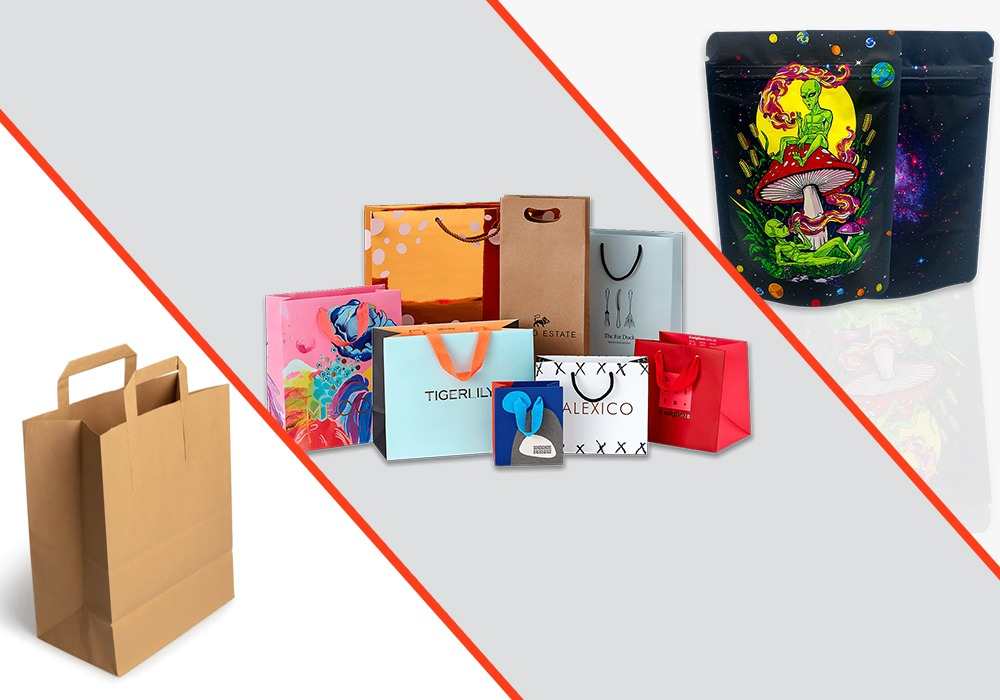Do you want to eliminate plastic from your life? If so, flexible packaging may be one of the larger culprits. One way we could approach this is by eliminating processed foods. The list of ingredients on a box of crackers or a can of soup will most likely feature polyethylene if it’s a packaged food product that came in contact with flexible packaging.
Can We Please Eliminate Flexible Packaging?
The one thing we all have in common is that we are all consumers. We buy things. We use things. And then we toss those things out when we’re done with them. But some of us do it more than others and more often than others, and that’s because of something called flexible packaging.
Flexible packaging is the name for the thin plastic wrappers that hold most of the foods you buy in stores. They’re also call “clamshells” or “poly wrap.” These product packaging have been around since the 1960s and protect food from getting crush during transport. Still, they also serve as a barrier between your food and your environment—including other people carrying bacteria or germs on their hands. When you throw away these packages in your trash bin (or recycle bin), they end up in landfills, where they’ll sit for hundreds of years before breaking down into smaller pieces of plastic that pollute our oceans by getting eaten by marine animals that mistake them for food! And while that can be helpful in some cases, overall, it just means more waste for everyone involve.
So What Can Be Done About This Problem? There are already companies working on this problem—so let’s support them! We should replace them with biodegradable materials like paper or cotton so they can easily break down if they end up in landfills or oceans.
What Will That Mean for Consumers?
The elimination of flexible packaging could spell disaster for consumers. For one thing, it would mean an increase in the cost of goods sold: except in the beverage packaging industry, single-serve packaging is more expensive than other options. This means that prices will go up—and consumers are already struggling with high prices.
For another thing, this would mean a loss of convenience. Flexible packaging makes it easier for consumers to purchase products on the go and keep them fresh longer without refrigeration. It also keeps food from getting damaged during transport or storage. The elimination of flexible packaging could significantly affect how quickly consumers can get their hands on what they need when they need it most!
Aren’t Plastic Wraps Recyclable?
Plastic wrap is a type of flexible packaging made of polyethylene. This material has been useful in flexible packaging since the 1950s, and it’s been around for decades.
Flexible packaging is useful for a variety of purposes. It is useful to wrap food products, such as meat or cheese. The plastic wrap keeps your food fresh longer because it seals in moisture and keeps oxygen out. This helps prevent spoilage and extends the shelf life of your food by keeping it from drying out or developing mold.
Flexible packaging can also be useful for other reasons. It can cover up things that need protection from dirt or dust, such as electronics or furniture. It can even be useful as an insulator for pipes!
In short: It’s possible to recycle plastic wraps, but it takes work. And if we want our world to be cleaner and greener for future generations, we need to do everything we can—including reducing our use of plastics.
Ok, So What Should We Do?
If you’re looking for a quick and easy fix, there isn’t one. We can’t stop packaging altogether—that’d be a huge environmental hit. But we can change our habits and use less flexible packaging when possible.
When buying food, try to avoid plastic bags as much as possible. Instead of using a plastic bag to hold your groceries in-store, bring your reusable bags. If you’re buying produce, consider asking whether they sell it without packaging so you can take it home in your containers.
If you’re ordering takeout or delivery food in a paper container instead of Styrofoam or plastic—great! You’ll be helping the environment and making your food healthier by getting rid of those extra chemicals they put on top of the meal.

Are There Alternatives?
While it may seem like flexible packaging is the only option for some products, there are other options. For example, if you’re looking to package your product in a bag or box, you can choose from a wide variety of options. These include paper bags and boxes made from recycled materials. Some options are made from plant fibers, which can be recycled easily. Or you could use paperboard boxes instead of plastic ones if you’d prefer—they’re easier on the environment and recyclable too!
If you’re looking for something more durable than paper or cardboard, there are many different plastic containers available today. Some companies have even started using biodegradable materials like PLA plastic to create their packaging instead of PVC or plastic bags. PLA plastic breaks down naturally in landfills after just six months—much faster than traditional plastics—so it’s much better for the environment! The list goes on!
Conclusion
It’s not an exact science, but we’ve learned over time by talking with customers and testing out different types of packaging. If you agree with us and think this issue needs to be addressed, please support our petition by sharing it with your friends on Facebook, Twitter, and Instagram!
















The elimination of flexible packaging could spell disaster for consumers — important point.
Basically, embossed printing separates the graphic (usually the brand logo) from the printed matter on the packaging. On the other hand, the debossing technique does the opposite of giving the graphic a sunken loo —- good describe.